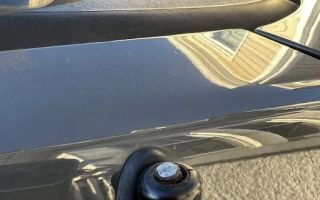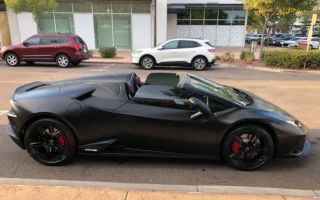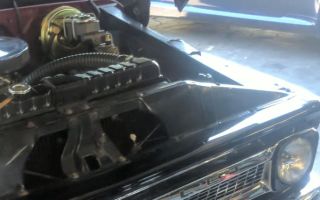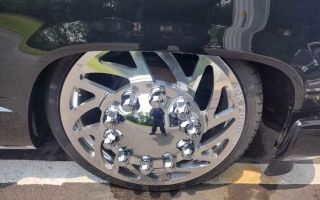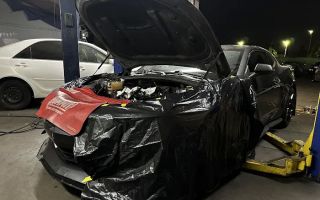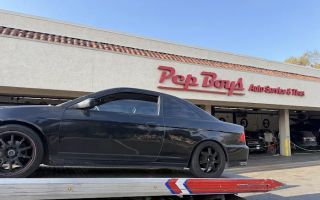How to Fix Car Engine Backfiring Issues: A Comprehensive Guide
As a car owner, nothing is more frustrating than dealing with engine problems, especially when your car starts backfiring. The sound of a loud pop or bang coming from your engine can be alarming, and it’s a sign that something is wrong. In this article, I’ll share my experience and step-by-step process of identifying and fixing car engine backfiring issues. Whether you're a seasoned mechanic or a DIY enthusiast, this guide will help you troubleshoot and fix your engine’s backfiring problems effectively.
1. Understanding Car Engine Backfiring
Before diving into the fix, it’s essential to understand what backfiring is. In simple terms, a car engine backfires when fuel is ignited outside the engine’s combustion chamber. It can occur in either the intake or exhaust system, and it can be caused by various issues. I’ve experienced backfiring a few times, and I’ve learned that understanding the underlying causes is crucial in addressing the problem.
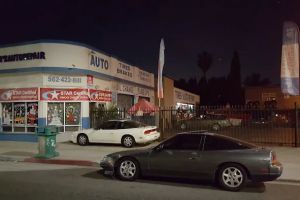
Walter's Auto Repair
5508 Atlantic Ave, Long Beach, CA 90805, USA
1.1 Types of Backfiring
There are two main types of engine backfiring: intake backfire and exhaust backfire. The first time I dealt with backfiring, I wasn’t sure which type I had. Let me explain the differences:
- Intake Backfire: This happens when fuel in the intake manifold is ignited before it reaches the engine’s cylinders. It’s more common in cars with a fuel-injection system, and you may hear a popping sound from the intake area.
- Exhaust Backfire: This occurs when fuel burns in the exhaust system, often after the exhaust valves close. It can produce a loud bang or popping noise from the exhaust pipe, which is something I’ve heard more than once while driving.
1.2 Causes of Backfiring
From my experience, backfiring can be triggered by several factors, and it’s important to diagnose the exact cause. Here are some common causes that I’ve encountered:
- Incorrect Air-Fuel Mixture: If the air-fuel mixture is too rich (too much fuel) or too lean (too little fuel), it can cause incomplete combustion, leading to backfiring.
- Faulty Spark Plugs: Worn-out or damaged spark plugs can result in delayed ignition, causing fuel to burn at the wrong time, which often leads to backfiring.
- Timing Issues: Incorrect ignition timing can make the spark occur too early or too late in the combustion cycle, causing backfires. I had this issue once and had to adjust the timing to fix it.
- Vacuum Leaks: Leaks in the vacuum lines can disturb the air-fuel mixture and lead to engine misfires, contributing to backfiring. I always make sure to inspect the vacuum lines whenever I face this issue.
- Dirty Fuel Injectors: Fuel injectors that are clogged or malfunctioning can disrupt the fuel delivery process and cause backfires.
2. How to Diagnose the Cause of Backfiring
Before I jump into fixing the backfire, I always start by diagnosing the issue thoroughly. Diagnosing the cause correctly is key to making the right repairs. Here’s my step-by-step approach to identifying the problem:

Car Lovers Automotive, Inc.
884 New Lots Ave, Brooklyn, NY 11208, USA
2.1 Inspect the Spark Plugs
Whenever I face backfiring, the first thing I check is the spark plugs. Over time, spark plugs can wear out or become covered in carbon deposits, which can lead to ignition issues. I remove the spark plugs and inspect them for wear. If they look damaged or corroded, I replace them with new ones. Spark plugs are affordable, and replacing them can solve the backfiring problem in many cases.
2.2 Check the Timing
If the spark plugs are in good condition, I move on to checking the ignition timing. Incorrect timing is a common cause of backfiring, and it’s something I had to adjust in my car a few years ago. To check the timing, I use a timing light, which allows me to compare the timing marks on the crankshaft pulley with the manufacturer’s recommended specifications. If the timing is off, I adjust it using the timing adjustment screw or by repositioning the distributor.
2.3 Look for Vacuum Leaks
Vacuum leaks are another frequent cause of backfiring. To check for leaks, I use a carburetor cleaner or a spray bottle with soapy water. I spray around the vacuum lines, intake manifold, and gaskets while the engine is running. If there’s a change in engine speed or a bubble appears, I know I’ve found the leak. I’ll fix any leaks by replacing the affected hoses or gaskets, which typically resolves the backfiring issue.
2.4 Test the Air-Fuel Mixture
If everything with the ignition system checks out, I move on to the air-fuel mixture. A rich or lean mixture can lead to backfiring. To check this, I observe the exhaust fumes while the engine is idling. If the exhaust smells too rich or too lean, I adjust the carburetor or fuel injectors. In some cases, I’ve had to clean or replace the fuel injectors to restore proper fuel flow.
3. How to Fix Engine Backfiring
Once I’ve diagnosed the cause of the backfiring, I move on to the repairs. Depending on the issue, the fixes can range from simple tasks like replacing spark plugs to more involved procedures like adjusting timing or fixing vacuum leaks. Below are some of the most common fixes I’ve performed to solve backfiring:
3.1 Replacing the Spark Plugs
If worn-out spark plugs are the cause, I replace them with new ones. It’s a relatively quick fix, and new spark plugs often solve the backfiring problem right away. I make sure to use the manufacturer’s recommended spark plugs and torque them to the proper specifications to avoid issues down the road.
3.2 Adjusting the Ignition Timing
If the timing is off, I adjust it using a timing light. I make small adjustments to the timing until it aligns with the manufacturer’s specifications. Proper ignition timing ensures that the spark occurs at the right moment in the combustion cycle, preventing backfires.
3.3 Fixing Vacuum Leaks
To fix vacuum leaks, I replace any cracked or damaged hoses and gaskets that I identified during the inspection. I also check the intake manifold and carburetor for signs of leaks. After replacing the parts, I recheck the engine for any changes in idle speed or leaks to ensure everything is sealed properly.
3.4 Adjusting the Air-Fuel Mixture
If the air-fuel mixture is too rich or too lean, I adjust the carburetor or fuel injectors. In some cases, cleaning the fuel injectors can solve the problem. I’ve used an injector cleaner to flush out any buildup and restore proper fuel flow. Once the mixture is properly adjusted, I test the engine to ensure the backfiring is gone.
4. Preventative Maintenance Tips
To avoid dealing with backfiring in the future, I make sure to keep up with regular vehicle maintenance. Here are a few tips I follow to prevent engine backfiring from happening:
4.1 Regularly Replace Spark Plugs
Replacing spark plugs every 30,000 to 50,000 miles (or as recommended by the manufacturer) helps prevent ignition issues. Clean, well-maintained spark plugs are essential for smooth engine operation.
4.2 Perform Regular Timing Checks
Timing issues can develop over time, so I always check the timing every once in a while, especially if I notice performance problems or hear unusual sounds from the engine.
4.3 Inspect and Maintain Vacuum Hoses
Vacuum hoses can become brittle and crack with age. I regularly inspect all the hoses in my engine bay and replace any that are worn out or cracked. This simple maintenance step helps prevent vacuum leaks and engine misfires.
4.4 Keep the Fuel System Clean
I use fuel system cleaners to keep the injectors, fuel lines, and combustion chamber free from carbon buildup. This helps maintain the proper air-fuel mixture and prevents backfiring caused by a clogged fuel system.
If you find yourself facing more complicated issues or need professional help with engine repairs, I recommend checking out Rescue & Towing for reliable assistance and services.

